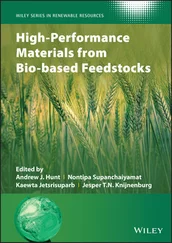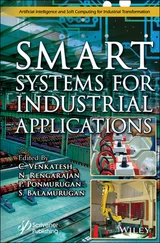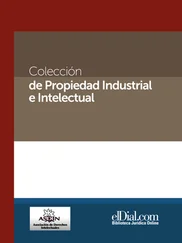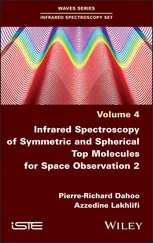Tripti YadavLadybird Research Laboratory, Department of Zoology, University of Lucknow, Lucknow, Uttar Pradesh, India
Chang‐Ping YuGraduate Institute of Environmental Engineering, National Taiwan University, Taipei, Taiwan
Microorganisms are the most abundant and diverse unicellular organisms on the earth, equipped with distinguishable characteristics and functionality. Bioprospecting offers exploitation of microbial resource for societal benefits. The useful applications of microbial diversity have been established in medical, food, textile, and agro‐industrial sectors. Microorganisms are source of biomolecules of health significance, antibiotic, anti‐insecticidal compounds, biosurfactants, biofilm, etc. Microbial resources for production of bio‐hydrogen, biomethane, biodiesel, and microorganisms have been reported. Microorganisms also contribute to the aspects of food security and bioremediation. Many microbial enzymes have been employed for executing a wide range of chemical interconversions, producing diverse biomolecules of functional properties, and for other industrial bioprocessing aspects such as agri‐biomass hydrolysis, and so on. Microbial strains have been identified with crucial implications for the bioremediation of polluted niches. The microbial gums of useful applications in medical, food, cosmetics, and agricultural sectors are produced by a range of microorganisms, e.g. bacteria, fungi, and algae. A wide range of microbial compounds with antioxidant, antiaging, and skin lightening effects have been identified. Microbial bioprocesses have been developed for production of organic acids, which are building blocks of many valuable products such as degradable polymers, polyesters, and bioplastics. Microbes have been demonstrated to be cell factories for production of bioactive compounds and recombinant proteins of biomedical relevance. Many microbial molecules of antimicrobial, antiviral, anti‐inflammatory, immunomodulatory, anticancerous, etc., properties have been reported. A diverse types of functional microbial molecules of ultra‐reduced calorie, prebiotic, and anti‐oxidative effects have been identified. Some phenolic compounds and mycosporine‐like amino acids of microbial origin have been reported to be sunscreen and antiaging effects. Several intriguing efforts have been made for developing bioprocesses for the economically viable production of polyhydroxyalkanoates and related copolymers, helpful in addressing the issues related with plastic uses.
This book represents a distinguished repository of knowledge around microbial bioprospecting. The book is useful to academicians and researchers in augmenting their understandings on the aspects mentioned above.
We are thankful to the Center of Innovative and Applied Bioprocessing and Panjab University, Chandigarh, for providing facility to complete this book. We are grateful to all the esteemed authors for their exceptional contributions and reviewers for their critical evaluation and suggestions for the quality improvement of the book.
We would like to thank Miss Rebecca Ralf (Commissioning Editor), Miss Kerry Powell (Managing Editor), and Nivetha Udayakumar (Content Refinement Specialist) from John Wiley & Sons, Ltd for their excellent management of this project and anonymous reviewers for their positive recommendations about the book.
We also appreciate the support of our friends and research students, whose discussion and comments were beneficial to shape this book. We thank our numerous colleagues for direct or indirect help in shaping this project.
SPS is grateful to his parents and family for consistent moral support. SPS acknowledges the support from CIAB and the Department of Biotechnology (DBT). SKU wishes to express gratitude to his parents, wife, and daughter for their endless support, patience, and inspiration.
We would like to warmly thank faculties and staffs of the department and university for providing a great working environment.
1 An Introduction to Microbial Biodiversity and Bioprospection
Tomoya Shintani1, Santosh Kumar Upadhyay2, and Sudhir P. Singh3
1 Department of Nutritional Representative – Supplement Adviser, The Japanese Clinical Nutrition Association, Tokyo, Japan
2 Department of Botany, Panjab University, Chandigarh, India
3 Center of Innovative and Applied Bioprocessing (DBT-CIAB), Mohali, Punjab, India
1.1 Introduction
1.1.1 Microorganisms
The term “microorganisms” refer to organisms that are so minute that the human eye cannot discern their structure. Almost all the unicellular organisms are included in the category of microorganisms. However, many multicellular organisms are microscopic. The microbes may also exist as cell clusters. Microbes are not limited to only eubacteria and archaea but also includes members from fungi, protozoa, algae, and viruses. Ribosomal RNA is considered a crucial molecule to draw an authentic classification of the life forms. On the basis of comparative rRNA sequence analysis, a basal universal phylogenetic tree had been inferred by Carl Woese [1], representing the overview of organismal history. This phylogenetic tree hypothesized the common origin of all forms of life, emphasizing the importance of microorganisms in the biological diversity at the Earth.
The global compilation of microbiological data has estimated the existence of about 1 trillion microbial species at the Earth [2]. The Earth Microbiome Project had been established in the year 2020, with the main objective to document the uncultured microbial diversity and the functional potential thereof [3]. In the project, sampling of the Earth's microbial communities is being done on an unprecedented scale. Recently, a total of 27 751 samples had been collected from 43 countries to characterize the microbial communities of diverse physicochemical properties and exposed to a wide range of biotic and abiotic factors [4].
Bioprospecting is the excavation of useful genetic or biochemical materials from natural resources [5]. The word “bio‐” refers to “organism” and “prospecting” refers to the search for precious material. Bioprospecting of the microbial population, residing in diverse ecological niches, is gaining more and more attention with the increasing demand for bioactive molecules and nutraceuticals of pharmaceutical, food, and agro‐industrial significance. Microorganisms exist in every corner of this planet, and many of them may not be cultivated. Bioprospecting of biologicals, including microbes, requires interdisciplinary knowledge to exploit the natural resource for societal benefits in a sustainable manner.
A major proportion of Earth contains extreme environmental, where most of the life forms cannot survive. However, extremophiles, which evolve a natural mechanism to thrive the harsh condition, are considered a rich biological resource for extremophiles [6]. The bioactive compounds and the extremozymes have great industrial importance [7]. There is an enormous genetic pool of microbes co‐evolved with the higher organisms, including plants and animals. They have manifold promising biomolecules of industrial importance [5]. There are boundless opportunities to explore the treasure box to meet the growing demand for novel bioactive molecules, e.g., food ingredients, agrochemicals, functional biomolecules, antibiotics, enzymes, and so on. Omics is a compelling approach for the exploration of various niches of diverse environmental conditions and the discovery of unusual novel enzymes and other metabolites of human use [8].
1.1.3 Bioprospection of Microorganisms
Читать дальше











